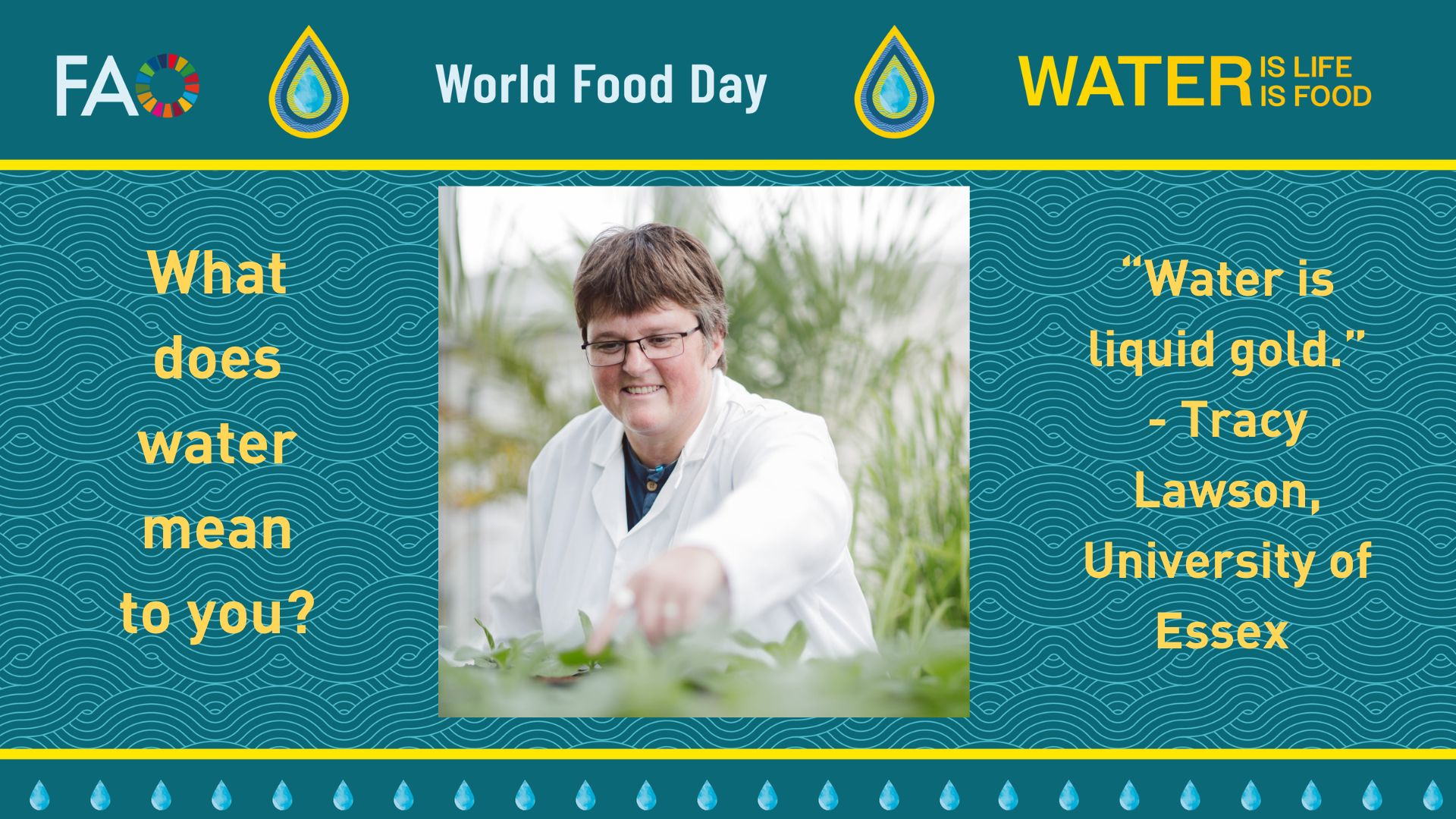What does water mean to you, Tracy Lawson?
"What does water mean to you?” This question has been asked to many people worldwide as a campaign to spread awareness about water scarcity and how it affects food production and world hunger. The Food and Agriculture Organization of the United Nations (FAO) created a day to bring awareness to world hunger and food called World Food Day, and this year's theme is water.
When asked this question, Tracy Lawson, the director of the Plant Phenomics Lab and a professor of plant biology at the University of Essex, said that water is essentially “liquid gold”. Water is especially essential for plants; without water, plants cannot function and will not grow, and therefore we will not have the food we have today. She explained that is fundamental to all plant processes including the biochemical reaction of photosynthesis in which carbon dioxide is taken up for photosynthesis and water is split, which releases oxygen into the atmosphere, which we breathe. Water is essential for the plant to be able to open stomata on the leaf surface, the small pore through which plants “breath”. When these pores open, CO2 is taken up for photosynthesis and water is lost – therefore if the plant does not have sufficient water, stomata will not open, and the photosynthetic fixation of CO2 cannot take place.

The motto for this year's World Food Day is, "Water is life, water is food, leave no one behind.". When asked how her research fits into this motto, Lawson said she researches stomatal control on gas exchange and is working to speed up stomatal responses. During photosynthesis, when the stomata open to take in carbon dioxide, they also release water through evaporation. This makes the plant lose water, so it needs to obtain more water to replace what is lost. The water lost from plants is also important to help plants maintain temperature through evaporative cooling. Lawson wants to see if stomata can be manipulated to decrease plants' water loss, especially with climate change when less water is available in many parts of the globe.
Lawson became interested in this field during her undergraduate years when, in one of her classes, she learned how plants in arid climates curl their leaves and had sunken stomata to reduce evaporative water loss. She thought this phenomenon was fascinating, so she later studied stomata and their importance in regulating gaseous exchange between the plant and the atmosphere for her PhD. Now, she is working on controlling stomata to reduce water loss and help conserve water resources. If water loss from plants can be regulated more closely with demands for photosynthesis, irrigation can be used more efficiently.
Much needs to be done to make our crops more water-efficient to show the public why this is crucial, so Lawson uses thermal cameras to show plant water loss and evaporative cooling. When a plant loses its water, it cools down, through water evaporating through the stomata, as opposed to water stressed stomata, which closes, and the plant warms up, and thermal cameras enable plant temperatures to be imaged. This information helps research users understand how stomata works. Lawson and her team also use infrared gas analysis to measure gas fluxes entering and leaving the leaf, which provides a very precise measurement of how open the stomata are (stomatal conductance) and how much CO2 uptake or photosynthesis is taking place.
Lawson hopes that one day, we will be able to have water-use efficient crops that will conserve our freshwater and feed the world, all at the same time.
RELATED RIPE OBJECTIVES
Mesophyll Conductance